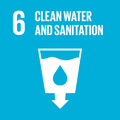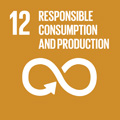- Docente: Alessandra Locatelli
- Credits: 7
- Language: Italian
- Moduli: Alessandra Locatelli (Modulo 1) Alessandra Locatelli (Modulo 2)
- Teaching Mode: Traditional lectures (Modulo 1) Traditional lectures (Modulo 2)
- Campus: Bologna
-
Corso:
Single cycle degree programme (LMCU) in
Chemistry and Pharmaceutical Technologies (cod. 8412)
Also valid for Single cycle degree programme (LMCU) in Chemistry and Pharmaceutical Technologies (cod. 8412)
Learning outcomes
By following this course, the student should learn the principal identification methodologies for the drug substances, which are enlisted in the Italian and European pharmacopoeias. He could then apply the acquired knowledge to solve new analytical problems related to the pharmaceutical field.
Course contents
Drug Solubility. Determination of solubility parameters. Type of solvents. Intermolecular forces: hydrogen bonding, Van der Waals and ionic interactions. Structure-solubility relationships. Solubility of weak acid and weak basic drugs.
Characterization of liquid drugs. Definition and determination of relative and absolute density. Definition and determination of refractive index. Abbe refractometer. Qualitative analysis of liquid drugs.
Characterization of solid drugs. Determination of melting point. Melting point variables.
Polarimetry. Specific optical rotatory power. Polarimeter scheme and polarimetric determination.
Spectroscopy techniques for the qualitative analysis of drugs:
(a) UV-VIS spectroscopy for the qualitative analysis of drugs in compliance with the Italian and European Pharmacopoeias. Scheme and use of double beams spectrophotometers.
(b) Infrared spectroscopy. Applications to drug analysis, identification of functional groups. Qualitative elemental analysis
Identification of drugs by chemical reactivity of functional groups. alkenes, alcohols, phenols, ketones, aldehydes, acids, esters, amines, amides, nitro-derivatives and sulfur compounds.
Identification of compounds inscribed in the Pharmacopoeia. Preliminary test: evaluation of the behavior of the substances when heated. Inorganic qualitative analysis. Qualitative elemental analysis: determination of the elements (C,N,O,S) of organic drugs by Lassaigne's test. Illustration of the systematic procedure for compound identification.
Extraction methods for sample pretreatment:
(a) Solid phase extraction (SPE): theory, type of sorbents, apparatus for SPE, matrices with different functionalities, RAM (restricted access matrices), molecularly imprinted polymers (MIPs). Extraction recovery; applications to pharmaceutical formulations.
(b) Solid phase microextraction (SPME): theory, apparatus for SPME, modus operandi, method optimization. Applications to pharmaceutical formulations.
LAB Tutorials:
Qualitative identification of drug substances by chemical and instrumental methods (spectrophotomer and IR spectometer, polarimeter, rifractometer).
Solid phase extraction (SPE) of ephedrine and sodium benzoate.
Readings/Bibliography
Teaching material for lessons and laboratory is available for students at the website http://iol.unibo.it.
For further reading, the following books are suggested:
V. Cavrini, V. Andrisano - Principi di Analisi Farmaceutica. Società Editrice Esculapio, Bologna.
European Pharmacopoeia and Farmacopea Ufficiale Italiana (current editions)
Teaching methods
The course includes lessons and laboratory practice and attendance is mandatory for both.
Assessment methods
Laboratory exam and oral examination.
The result of the laboratory exam does not expire. The aim of the laboratory exam is evaluating the candidate ability in the identification of compounds included in the Pharmacopoeia. Passing the laboratory exam is compulsory for the oral exam.
Oral examination: oral discussion on the course content and discussion on practical experiences carried out during the course. Discussion on the personal laboratory folder is part of the final evaluation.
Teaching tools
Lessons will be held by using slides.
The practical activity will be carried out individually by each student in laboratories equipped with chemical reagents and analytical instruments.
Office hours
See the website of Alessandra Locatelli
SDGs



This teaching activity contributes to the achievement of the Sustainable Development Goals of the UN 2030 Agenda.
